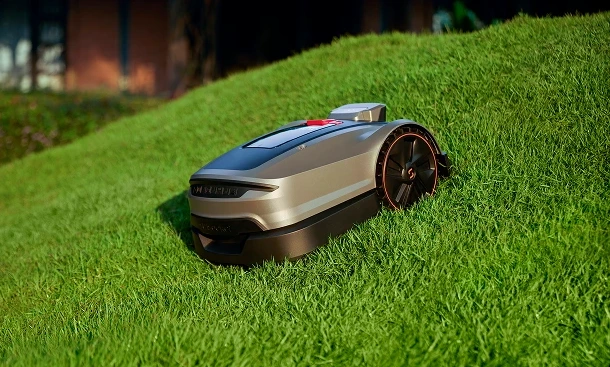If you’ve recently invested in a robot mower or are considering one, you might be wondering how often it should run. One common question many homeowners ask is: Should I run my robot mower every day? It’s a valid concern — after all, no one wants to wear down their machine prematurely or overwork their lawn. But the answer isn’t always a simple yes or no. It depends on several factors including your lawn size, grass type, growth rate, and the capabilities of your mower.
In this blog, we’ll break down the pros and cons of daily operation, give you real-life insights, and help you understand how to optimize your mower robot schedule for a healthier lawn and better results.
Understanding How a Robot Mower Works
Before deciding how frequently to run your robot lawn mower, it’s important to understand how it functions. Unlike traditional mowers that cut a large portion of grass in a single session, robot mowers are designed to mow continuously — trimming a little grass often. They don’t bag or collect grass; instead, they mulch the clippings into tiny pieces that decompose and fertilize your lawn naturally.
This frequent trimming helps maintain a uniform height and healthier lawn. But that doesn’t mean daily mowing is a must for everyone.
Benefits of Running Your Robot Mower Daily
1. Healthier, Greener Lawn
Daily mowing keeps your grass at a consistent height, which encourages even growth and promotes a dense, lush appearance. Small, frequent cuts reduce stress on the grass compared to occasional heavy cuts.
2. Mulching Efficiency
Since robot mowers mulch rather than collect grass, daily mowing results in ultra-fine clippings that decompose quickly. This feeds the soil with organic nutrients, improving lawn health over time.
3. Prevents Overgrowth
During rapid growth periods, such as spring and summer, running your robot mower daily prevents the lawn from becoming too tall. This avoids clogging and reduces the effort needed during each mowing cycle.
4. Discourages Weeds
A well-maintained, evenly cut lawn with thick grass coverage can reduce the likelihood of weeds taking root. Daily mowing keeps things uniform and gives weeds fewer opportunities to establish.
When You Might NOT Need Daily Mowing
Despite the benefits, daily mowing isn’t necessary for every lawn or homeowner. There are cases where running your mower less frequently makes more sense:
1. Low Grass Growth
In cooler months or in shaded areas where grass doesn’t grow fast, daily mowing can be overkill. If your grass hasn’t grown significantly, there’s no need to mow.
2. Small Lawns
If you have a small lawn, running the mower every day might not be necessary. Many modern mowers can handle small lawns in just a few short runs per week.
3. Battery Preservation
Although most robot lawn mowers are built to last, running it daily adds wear and tear on the battery and components. For long-term battery health, it’s okay to reduce mowing frequency during slow growth periods.
4. Noise Sensitivity or Restrictions
While robot mowers are generally quiet, they still produce some noise. If you or your neighbors are sensitive to sound, running the mower every day — especially at odd hours — may become bothersome.
Optimizing Your Mowing Schedule
Finding the right mowing frequency means balancing your lawn’s needs with the performance of your robot. Most modern mowers allow for flexible programming and support intelligent scheduling.
The scheduling of robot mower operations depends on:
- Grass Type: Fast-growing varieties (like kikuyu or ryegrass) may require more frequent mowing.
- Weather Conditions: During hot, dry spells, mowing less often helps reduce lawn stress.
- Lawn Size: Larger lawns may need more frequent coverage, even if done in sections.
- Robot Capability: High-end models with larger cutting decks or AI features can mow faster and more efficiently.
As a general rule, mowing 3–6 days per week is ideal for most lawns. Running your mower daily might be helpful during peak growth seasons but can be scaled back as needed.
Real-World Example: A Balanced Mowing Routine
Let’s consider an average suburban Australian home with a 500 sqm lawn. In summer, the grass might grow rapidly and benefit from mowing 6–7 times a week. But in winter or early spring, mowing 2–3 times per week is enough.
A user might set their mower robot to operate:
- Daily in the morning during high-growth months (e.g., October–March)
- Every alternate day or twice a week during cooler months (e.g., May–August)
This schedule maintains lawn health while extending the life of the mower and reducing unnecessary energy usage.
Myths About Daily Robot Mowing
Let’s bust a few myths that cause confusion about daily use:
Myth 1: Running it daily will wear it out too quickly.
Truth: Robot mowers are designed for frequent use. As long as it’s maintained properly and not mowing excessively on dry or dead grass, daily use is not harmful.
Myth 2: It’s better to mow once a week like a normal mower.
Truth: Robot mowers work on the principle of frequent light mowing. Mimicking traditional mowing defeats their purpose and reduces the mulching benefit.
Myth 3: Mowing daily uses too much electricity.
Truth: Robot mowers are very energy-efficient. Even with daily operation, their power consumption is significantly lower than traditional petrol or electric mowers.
Should You Run Your Robot Mower Every Day?
In most cases, yes — especially during peak grass growth seasons, running your robot mower daily ensures your lawn stays healthy, evenly cut, and visually appealing. However, it’s not a strict rule. You can adjust the frequency based on seasonal growth, lawn size, and your mower’s capacity.
The flexibility of today’s robot lawn mower technology allows you to customize the mowing schedule to suit your unique garden. Whether it’s every day or a few times a week, the key is consistency.
With a smart routine and a well-maintained mower, your lawn will look pristine — without you ever lifting a finger.

